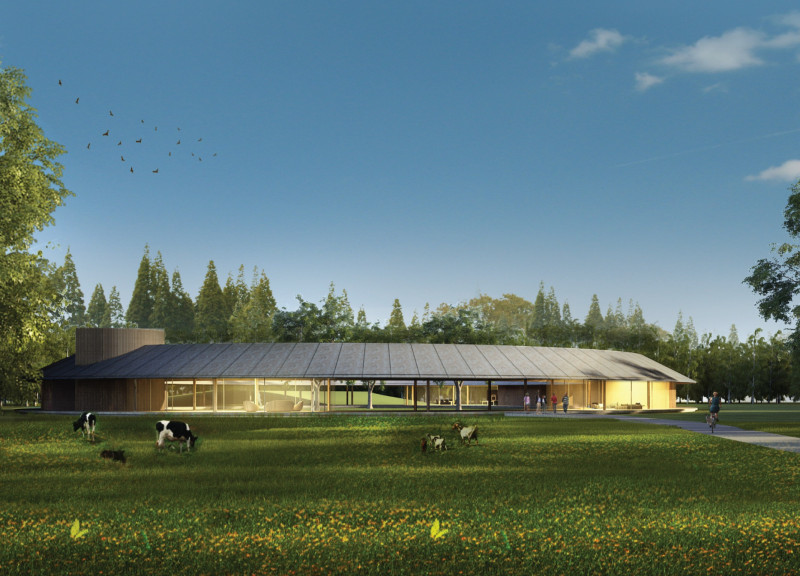5 key facts about this project
The Blue Clay Country Spa is located in a peaceful area designed as a retreat that connects with nature. The concept focuses on ecotourism, aiming to preserve the existing landscape features. The circular layout encourages visitors to interact with the space while promoting relaxation and rejuvenation.
Spatial Organization
The design employs a circular form that links different sections of the spa. This shape not only helps people move easily through the space but also encourages exploration of the surroundings. A main axis is thoughtfully positioned to align with important elements such as the entrance path, a calm pond, and nearby farmland, improving access and enhancing the spatial experience.
Natural Integration
The project emphasizes the importance of conservation, focusing on keeping existing trees and the natural landscape intact. This approach reduces disruption to the ecosystem and maintains its integrity. By blending elevations and shapes of the land, the design respects the natural setting, allowing for a smooth transition between the landscape and the structures.
Material Considerations
Oak wood is a key material used in the design, adding warmth and a natural touch to the interiors. This choice of wood strengthens the connection to the local environment and enhances the overall feeling of comfort. The use of wood reflects a commitment to sustainability and promotes a sense of harmony between the building and its natural surroundings.
Sensory Experience
The design aims to engage the senses to promote relaxation. It achieves this through the careful use of natural light and sound. Shading devices manage the amount of daylight and help minimize glare, creating a comfortable indoor space throughout different seasons. The gentle sounds from the natural environment enrich the atmosphere, making it easier for visitors to relax and unwind.
The combination of these design elements fosters an environment that encourages deep engagement with nature, focusing on tranquility and restorative experiences for those who visit.


























